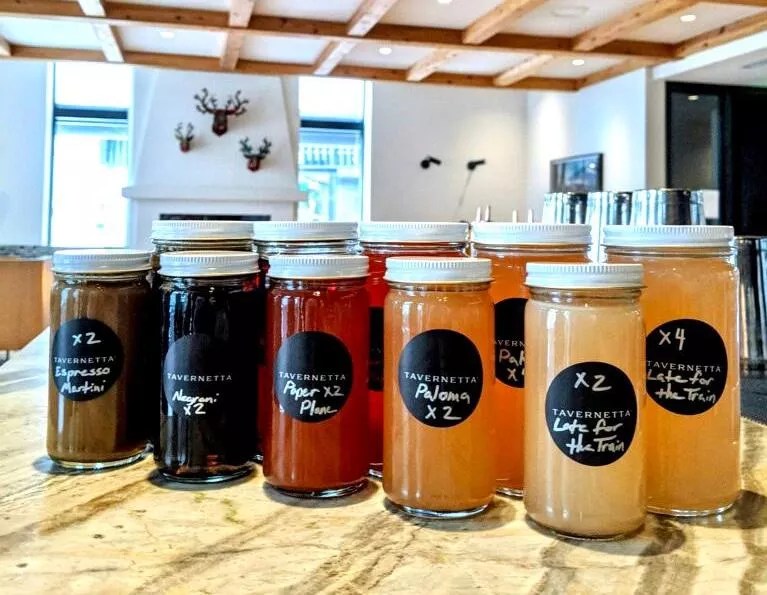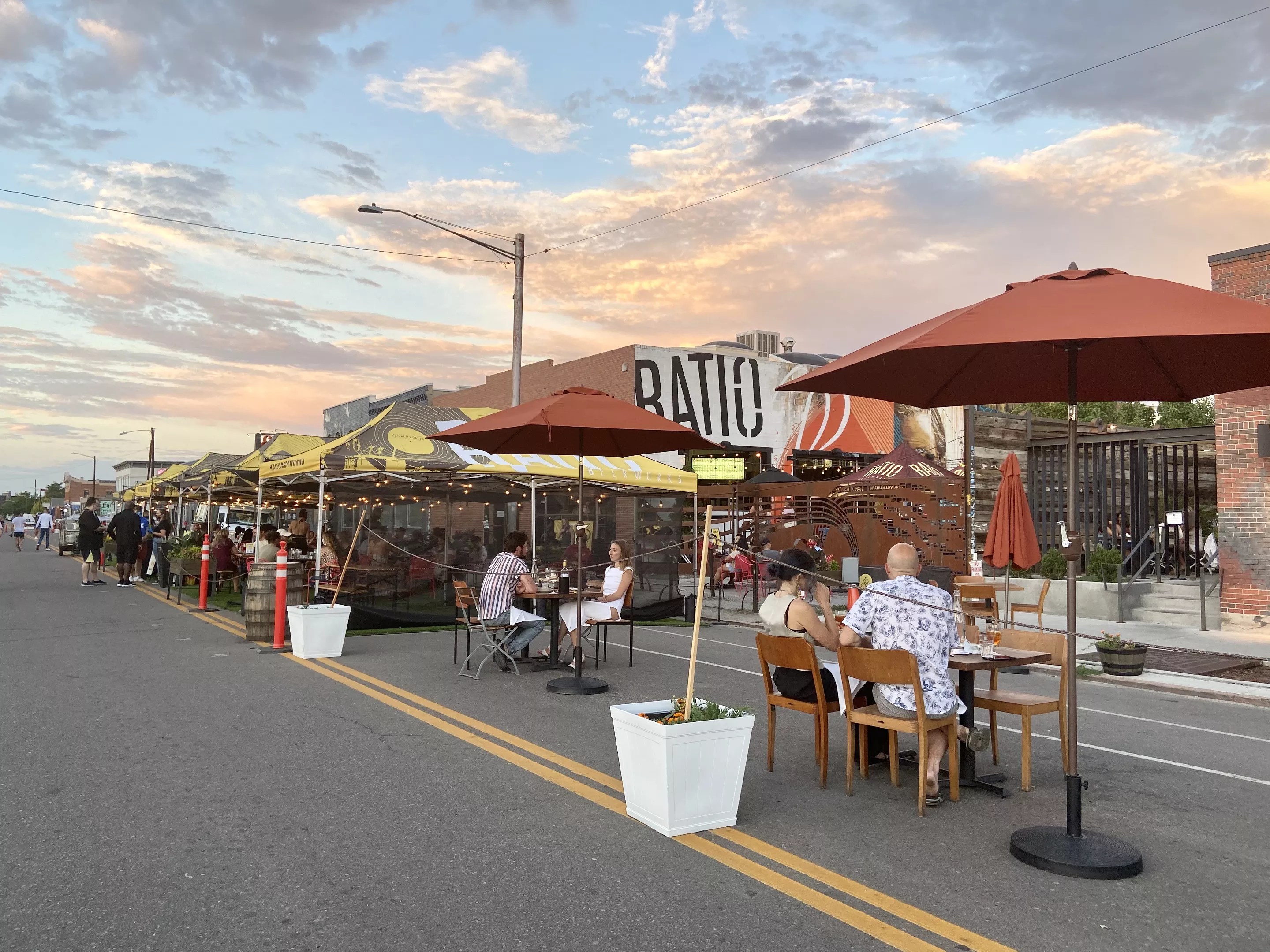
Tavernetta

Audio By Carbonatix
The single-biggest factor in getting restaurants back to pre-COVID levels of revenue is seating capacity. As long as businesses can’t operate at 100 percent, sales can’t get back to normal, and bars and restaurants can’t employ as many workers. But the health and safety of customers and workers are the priority, so establishments are going to need help to sell more food and booze, and to keep the bills paid for another few months.
Last summer, the Colorado Legislature passed a bill allowing restaurants and bars to sell liquor to go, adding a potential revenue stream to make up for fewer people drinking and dining indoors. That bill is set to expire at the end of June 2021, but a new proposal would extend the program for another five years, to July 1, 2026; it just passed the Colorado House on April 29 and now moves on to the Senate. The bill would also increase the amount of alcohol customers can buy; the new limit would include two six-packs of beer, two bottles of wine and a liter of spirits, in addition to batched cocktails served in approved takeout containers.
The new regulation is exactly what Coloradans want, according to the Colorado Restaurant Association, which points out that “85 percent of adults over the age of 21 support alcohol to-go from restaurants.” The organization also gathers other statistics from restaurants across the state; 93 percent of Colorado restaurant owners recently said they’d derived revenue from takeout booze sales over the past year.

Expanded patio seating like this takeover of Larimer Street will be allowed until October 2022.
Sarah Voelkel
This year, make your gift count –
Invest in local news that matters.
Our work is funded by readers like you who make voluntary gifts because they value our work and want to see it continue. Make a contribution today to help us reach our $50,000 goal!
In Denver, the city has extended its temporary outdoor dining program through October 2022, allowing restaurants to retain outdoor seating in areas such as parking lots, streets and sidewalks. Many neighborhoods have enjoyed partial shutdowns of streets to accommodate tents and tables, such as 25th Street between Lawrence and Larimer, and South Pennsylvania Street just north of East Bayaud Avenue. Since current regulations still require tables to be at least six feet apart indoors, the additional outdoor seating can make up for fewer chairs, barstools and banquettes in dining rooms.
Businesses are still required to reapply every ninety days for their new outdoor spaces; so far the Denver Department of Excise and Licenses has signed up 363 establishments for the program, with only 6.9 percent of the applications declined (most of those because of incomplete or withdrawn applications). “We’re proud that the temporary outdoor dining program has accomplished what we hoped it would – give many restaurants and bars a lifeline to survive the pandemic and keep many of their employees working so they have the opportunity to thrive once the pandemic ends and seating capacity returns to full capacity,” says Ashley Kilroy, the department’s executive director. “As we enter what we hope are the final months of the pandemic, we are determined to keep our temporary outdoor dining program flourishing by extending the expiration of the program, making it easy to apply with online applications, concierge service and consolidated inspections.”
On the federal level, as part of the government’s American Rescue Plan, a new Restaurant Revitalization Fund was created specifically to disperse $28.6 billion to restaurants that aren’t publicly traded and have twenty or fewer locations (unlike the Paycheck Protection Program funds, which weren’t restaurant-specific and went to many large corporations). The U.S. Small Business Administration opened its application portal on Monday, May 3 – and surprisingly, it didn’t immediately crash.
For the first 21 days of the Restaurant Revitalization Fund, priority will be given to applications from businesses owned by women, veterans and other socially and economically disadvantaged groups (as identified in the wording of the legislation). And like many other grants and loans offered since the beginning of the pandemic, this one leaves out restaurants and bars that have opened recently, since the dollar amount is based primarily on the difference in revenue between 2019 and 2020.
Currently, Denver restaurants can seat at 100 percent capacity – which sounds great until you consider that tables still have to be at least six feet apart to meet health guidelines. Realistically, this still limits small- and mid-sized restaurants to about 50 percent of a full house, so until the distancing restrictions are lifted, restaurants are still hamstrung by capacity concerns.
But at least efforts are being made to ease the pain, and if patios fill up this spring and summer, it could feel like a return to more normal times in the industry.